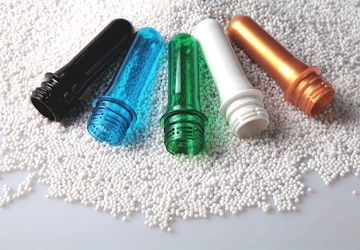Features of PET:
1. High Transparency: PET offers excellent transparency and is therefore frequently preferred in beverage bottles and food packaging. Thanks to its transparency, it preserves the visuality of the product it contains and provides an attractive presentation to the consumer.
2. Strong and Light: PET has a high strength-to-weight ratio, making it both durable and lightweight. These features facilitate transportation and processing, while also providing resistance to impacts.
3. Chemical Resistance: PET is resistant to many chemicals. Since it does not interact with acids, oils, alcohol and carbohydrates, it is widely used in the food and beverage industry.
4. Excellent Gas Barrier: PET has excellent barrier properties against gases such as oxygen and carbon dioxide. This feature is especially important in beverage bottles to preserve the freshness and flavor of the contents.
5. Recyclability: PET is one of the most commonly recycled plastic types. Recycled PET (rPET) can be used in the production of new bottles, textile fibers and other plastic products, reducing environmental impact.
PET Usage Areas
1. Beverage Bottles: PET is widely used in bottling carbonated drinks, water, fruit juices and other beverages. Its lightness and impact resistance provide safety during transportation and use.
2. Food Packaging: PET is a safe packaging material for food products. Its transparency allows the contents to be seen and its gas barrier properties preserve the freshness of the product. It is also used in microwaveable trays, packaged food containers and ready-to-eat food packaging.
3. Textile Fibers: PET, under the name of polyester, is widely used in the textile industry. It is used in the production of clothing, carpets, pillowcases and other home textile products. Its durability and flexibility make these materials long-lasting.
4. Engineering Resins: PET is also used in engineering applications. It is preferred as durable and heat-resistant materials in areas such as automotive parts, electronic components and industrial equipment.
5. Recycling Products: Recycled PET (rPET) is used in the production of new bottles, textiles, carpets and industrial parts. The recycling process both saves energy and reduces environmental impact.
Advantages and Disadvantages of PET
Advantages:
- Strong and Light: PET is resistant to impacts with its high strength, while its light weight makes it easy to carry and use.
- Chemical and Gas Barrier: PET has high resistance to many chemicals and gases, making it ideal for food and beverage packaging.
- Recyclability: PET is one of the most recycled plastics worldwide. The recycling process contributes to environmental sustainability.
Disadvantages:
- Heat Sensitivity: PET can degrade or melt at high temperatures, making it limited to applications requiring high heat. However, high-temperature resistant types (PETG) have been developed to solve this problem.
- Environmental Impacts: PET takes a long time to biodegrade in nature, which increases the risk of environmental pollution. However, effective recycling systems can alleviate this problem.
- Weak Moisture Barrier: PET is weaker as a moisture barrier than some other plastics, so additional coatings may be required in some special applications.
Polyethylene Terephthalate (PET) has a wide range of uses with its superior physical and chemical properties. It is used as an indispensable material in many sectors such as beverage bottles, food packaging, textile products and engineering applications. Its transparency, strength, chemical resistance and recyclability have made PET one of the basic materials of modern industry. However, effective implementation of recycling processes is necessary to minimize its environmental impact. With developing technologies and sustainability studies, it is expected that PET's future usage areas and environmental impacts will be better managed.




